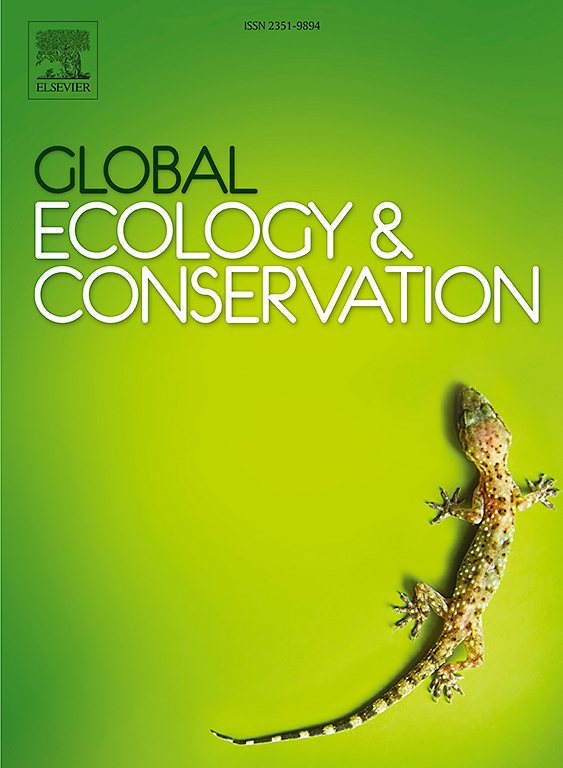Selecting habitats to reintroduce the endangered species Ardisia gigantifolia (Primulaceae) based on growth and physiological traits
IF 3.5
2区 环境科学与生态学
Q1 BIODIVERSITY CONSERVATION
引用次数: 0
Abstract
Ardisia gigantifolia is a critically endangered medicinal plant endemic to China and only 77 wild individuals were found at present. To provide detailed information for selecting its restoration habitats, plantlets of this species were transplanted into four sites with different habitats, including two current sites (GLQ and HK) with extant populations, one historical site (NX) and one site (BG) outside its historical range but near the existing range. The survival, growth and physiological performance of transplanted plantlets and habitat characters were compared among the four sites, and the population structure and physiological traits of wild individuals were compared among the two extant populations. The results revealed that relative irradiance would be the main factor influencing the photosynthesis and growth of transplanted plantlets. Transplanted plantlets at NX presented the best overall performance in survival, growth and physiology, and presented better physiological performance than wild seedlings at the two current sites, revealing that NX was the optimal habitat for reintroduction of A. gigantifolia. Compared to NX, severe shading at GLQ and HK resulted in the decrease of light energy utilization efficiency and growth parameters. Wild seedlings at GLQ exhibited significantly lower light energy utilization efficiency but significantly higher malondialdehyde content than those at HK, which would explain the lower proportion of young individuals and the smaller growth trend in the GLQ population.
求助全文
约1分钟内获得全文
求助全文
来源期刊

Global Ecology and Conservation
Agricultural and Biological Sciences-Ecology, Evolution, Behavior and Systematics
CiteScore
8.10
自引率
5.00%
发文量
346
审稿时长
83 days
期刊介绍:
Global Ecology and Conservation is a peer-reviewed, open-access journal covering all sub-disciplines of ecological and conservation science: from theory to practice, from molecules to ecosystems, from regional to global. The fields covered include: organismal, population, community, and ecosystem ecology; physiological, evolutionary, and behavioral ecology; and conservation science.
 求助内容:
求助内容: 应助结果提醒方式:
应助结果提醒方式:


